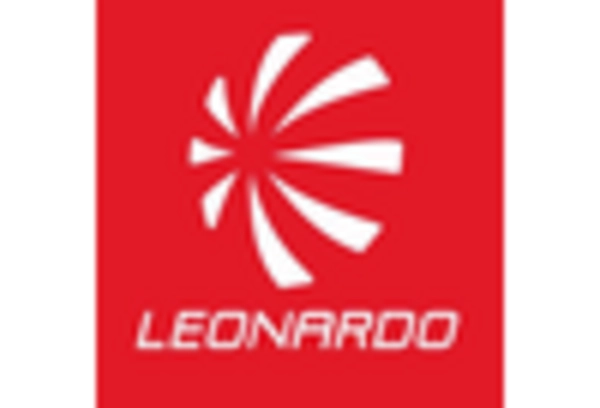Increased Military Investment
The Airborne Situational Awareness System Market is benefiting from heightened military investments across various nations. Governments are allocating substantial budgets to enhance their defense capabilities, particularly in airborne surveillance and reconnaissance systems. This trend is evident in the rising defense expenditures, which have seen an increase of approximately 3% annually in recent years. Such investments are aimed at modernizing fleets and integrating advanced situational awareness systems that provide comprehensive battlefield intelligence. As military operations become more complex, the demand for sophisticated airborne systems is likely to continue growing, thereby propelling the market forward.
Emerging Threats and Geopolitical Tensions
The Airborne Situational Awareness System Market is significantly impacted by emerging threats and geopolitical tensions. As nations face increasing security challenges, there is a pressing need for advanced situational awareness capabilities to monitor and respond to potential threats. The rise in asymmetric warfare and cyber threats has prompted military organizations to invest in sophisticated airborne systems that provide real-time intelligence. This heightened focus on security is likely to drive market growth, as countries prioritize the development and deployment of advanced situational awareness technologies to maintain strategic advantages in an evolving threat landscape.
Regulatory Compliance and Safety Standards
The Airborne Situational Awareness System Market is influenced by stringent regulatory compliance and safety standards imposed by aviation authorities. These regulations necessitate the integration of advanced situational awareness systems in both military and commercial aircraft to enhance safety and operational efficiency. Compliance with these standards is not only a legal requirement but also a competitive advantage for manufacturers. The market is expected to expand as companies invest in developing systems that meet or exceed these regulatory requirements. This focus on safety and compliance is likely to drive innovation and increase the adoption of advanced airborne situational awareness technologies.
Technological Advancements in Sensor Technology
The Airborne Situational Awareness System Market is experiencing a notable surge due to rapid advancements in sensor technology. Enhanced sensors, including synthetic aperture radar and electro-optical/infrared systems, are being integrated into airborne platforms, providing real-time data and improved situational awareness. These technological innovations enable military and civilian operators to detect and respond to threats more effectively. The market for airborne sensors is projected to grow significantly, with estimates suggesting a compound annual growth rate of over 5% in the coming years. This growth is driven by the increasing demand for high-resolution imagery and data analytics capabilities, which are essential for mission success in complex environments.
Growing Demand for Unmanned Aerial Vehicles (UAVs)
The Airborne Situational Awareness System Market is witnessing a significant increase in demand for unmanned aerial vehicles (UAVs). These platforms are increasingly utilized for surveillance, reconnaissance, and intelligence-gathering missions. The UAV market is projected to grow at a compound annual growth rate of over 15% in the next five years, driven by their versatility and cost-effectiveness. As military and commercial sectors recognize the advantages of UAVs equipped with advanced situational awareness systems, the market is likely to expand. This trend reflects a broader shift towards automation and remote operations in various applications, enhancing overall situational awareness.


















Leave a Comment